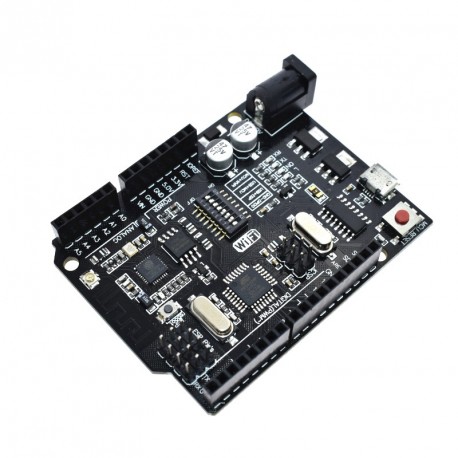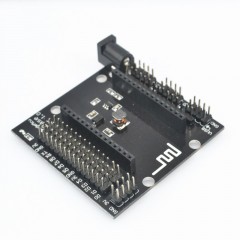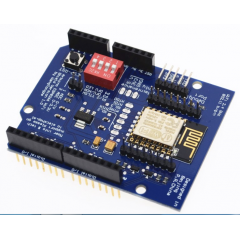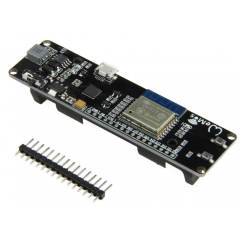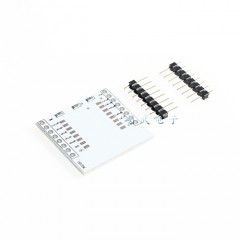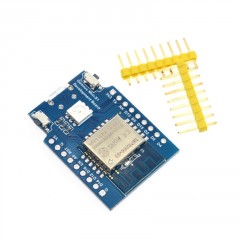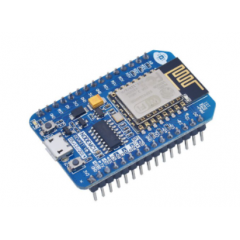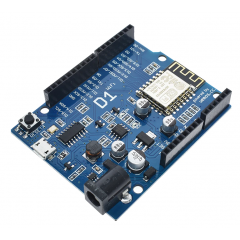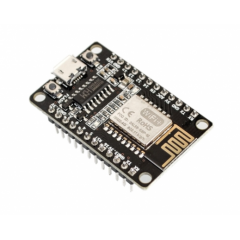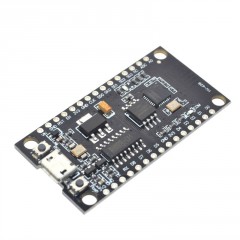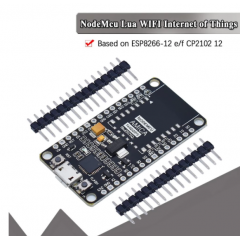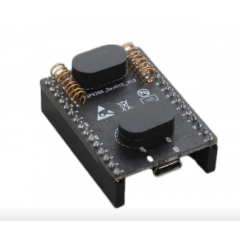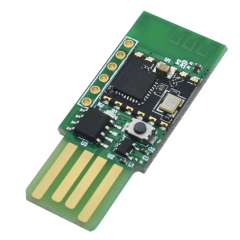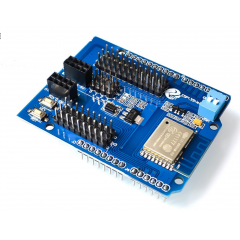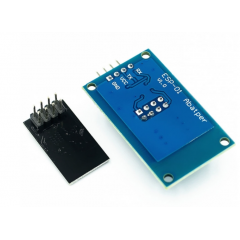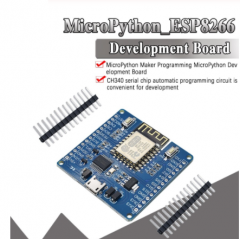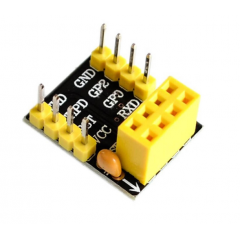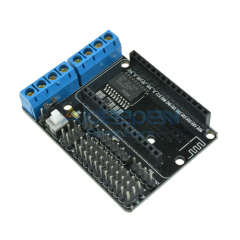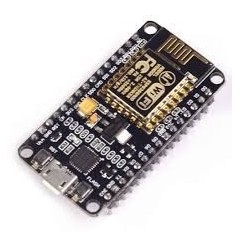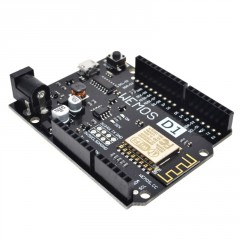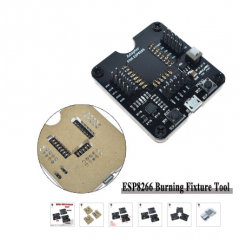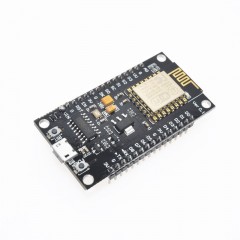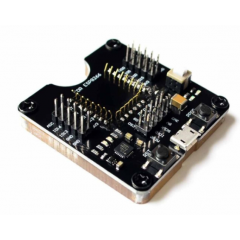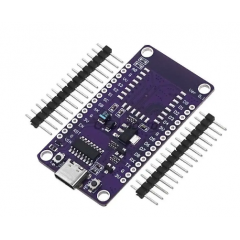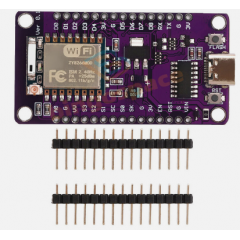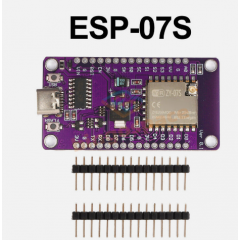Más
Especificaciones
| Microcontroller | ATmega328 |
| IC Wi-Fi | ESP8266 |
| USB-TTL converter | CH340G |
| Power Out | 5V-800mA |
| Power IN. USB | 5V (500mA max.) |
| Power IN. VIN/DC Jack | 9-24V |
| Power Consumption | 5V 800mA |
| Logic Level | 5V |
| Wifi | Wi-Fi 802.11 b/g/n 2.4 GHz |
| USB | Micro USB (No incluye cable) |
| Clock Frequency | 16MHz |
| Operating Supply Voltage | 5V |
| Digital I/O | 14 |
| Analog I/O | 6 |
| Memory Size | 32Mb |
| Interface Type | serialOTA |
| Operating temperature | −40С°/+125С° |
| Length×Width | 53.34×68.58mm |
| Weight | 8 |
| antenna | Buil-inexternal antenna |
Descripcion

Posicion de switchs y selección de modo:
|
|
1 |
2 |
3 |
4 |
5 |
6 |
7 |
8 |
|
CH340 connect to ESP8266 (upload sketch) |
OFF |
OFF |
OFF |
OFF |
ON |
ON |
ON |
NoUSE |
|
CH340 connect to ESP8266 (connect) |
OFF |
OFF |
OFF |
OFF |
ON |
ON |
OFF |
NoUSE |
|
CH340 connect to ATmega328 (upload sketch) |
OFF |
OFF |
ON |
ON |
OFF |
OFF |
OFF |
NoUSE |
|
Mega328+ESP8266 |
ON |
ON |
OFF |
OFF |
OFF |
OFF |
OFF |
NoUSE |
|
All modules work independent |
OFF |
OFF |
OFF |
OFF |
OFF |
OFF |
OFF |
NoUSE |
After choosing the mode of the board can proceed to setting up the IDE
It is important that when the ESP8266 module is programming, it is necessary to press the button “ESP Reboot”

To begin open the Arduino IDE programming environment and go to settings

Then in the window that appears in the row Additional Boards Manager URLs (marked in red) insert http://arduino.esp8266.com/stable/package_esp8266com_index.json link for installation in Arduino IDE additional scripts that would work with the modules ESP8266, and click OK

Then go to the Tools> Board> Boards Manager

In the window that appears, scroll through the list down to the script esp8266 by ESP8266 Community and click.

In the lower right corner will be able to select the version of the software, select the version 2.1.0 (the newest) and click the Install button

After installation, close the window and go to Tools> Board and see the list of available devices on the chip programming ESP8266

Next, you need to select the card as shown in the picture (Generic ESP8266 module)

Select the upload speed - 115200

==========test sketch===========
void setup()
{ Serial.begin(115200);
pinMode(14,OUTPUT);
delay(500);
Serial.println("AT+CIPMUX=1");
delay(2000);
Serial.println("AT+CIPSERVER=1,5000");
delay(2000);
Serial.println("AT+CIPSTO=3600");
delay(2000); }
void loop()
{ while(Serial.available())
{ char Rdata;
Rdata=Serial.read();
if(Rdata=='A'|Rdata=='a')
{ digitalWrite(14,HIGH);
delay(50); }
else if(Rdata=='B'|Rdata=='b')
{ digitalWrite(14,LOW);
delay(10);
digitalWrite(14,HIGH);
delay(10);
digitalWrite(14,LOW); }
else
{ digitalWrite(14,LOW); } } }


